Chapter 6.4: Printmaking
Printmaking is often referred to as the “art of many.” A print is an image made by transferring pigment from a matrix (a mold) to a final surface, often paper. Printing allows multiple copies of an artwork to be made. Multiple copies of an individual artwork are called an edition. We will examine several types of printmaking: relief, intaglio, lithography, one of the modern processes called monotype, planography, and stencil.
Video
The Museum of Modern Art (MoMA) gives us a brief introduction to the 3 main print processes.
Introduction to Printmaking (1:48)
Relief
There are four main types of printmaking: relief, intaglio, planographic, and stencil. Relief prints are made by removing material from the matrix, the surface the image has been carved into, which is often wood, linoleum, or metal (Figure 1). The remaining surface is covered with ink or pigment, and then paper is pressed onto the surface, picking up the ink. Letterpress is a relief printing process that transfers ink to paper but also indents an impression into the surface of the paper, creating a texture to the print that is often considered a sign of high quality.
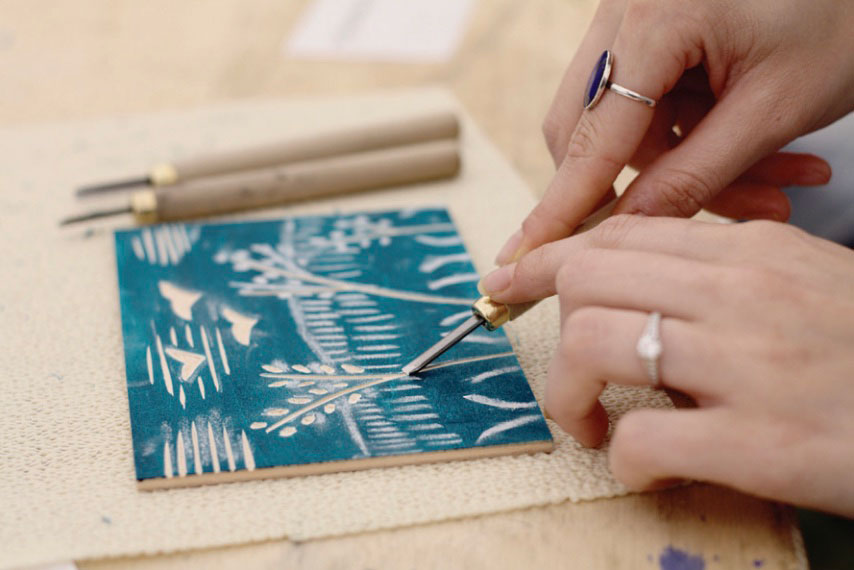
Videos
The next two videos from MoMA will provide and introduction to relief printing and also a demonstration of the process.
Introduction to Relief Printmaking (1:49)
The Relief Process (6:52)
Intaglio
Intaglio prints are made when a design is scratched into a matrix, usually a metal plate. Ink is wiped across the surface and collects in the scratches. Excess ink is wiped off and paper is pressed onto the plate, picking up the ink from the scratches. Intaglio prints may also include texture.
In intaglio printing, the lines to be printed are cut into the metal plate by means of a cutting tool called a handheld burin; this process produces an engraving. If the lines are cut out by the use of corrosive acids, we call this an etching.
Video
MoMA provides the step-by-step process for intaglio printing in the following video.
Introduction to Intaglio Process (1:35)
Lithography
Lithography is a method that uses a chemically altered matrix to selectively accept or reject water. Originally, limestone was used for this process since it naturally repels water but can be chemically changed to absorb it. In stone matrix lithography, black grease pencil drawings are made on a flat block of limestone, which is then treated with nitric acid. The nitric acid does not dissolve the stone but changes it chemically so that it absorbs water. The grease pencil is removed, and the stone gets wet. Where the grease pencil protected the stone from the acid, the limestone repels water and remains dry. Next, oil-based ink is rolled over the stone. Where the stone is dry, the ink will stick, but where the stone is wet, the ink will not. The image is “brought up” to the desired darkness by passing an ink covered roller on it, then it is printed by pressing paper onto the surface to pick up the ink. Most commercial printing today is lithographic printing, using aluminum plates instead of limestone blocks (or offset printing), where the inked image is transferred from a metal plate to a rubber cylinder and then to paper.
Videos
A brief introduction to lithography and the lithographic printing process is demonstrated from start to finish in the following videos from MoMA.
Introduction to Lithography (2:10)
The Lithography Process (7:06)
Planography
Planographic prints are made by chemically altering a matrix to selectively accept or reject water. Originally, limestone was used for this process since it naturally repels water but can be chemically changed to absorb it. In stone matrix lithography, black grease pencil drawings are made on a flat block of limestone, which is then treated with nitric acid (Figure 2). The nitric acid does not dissolve the stone, but changes it chemically so that it absorbs water. The grease pencil is removed, and the stone wetted. Where the grease pencil protected the stone from the acid, the limestone repels water and remains dry. Next, oil-based ink is rolled over the stone. Where the stone is dry, the ink will stick, but where the stone is wet, the ink will not. The image is “brought up” to the desired darkness by passing an ink covered roller on it, then it is printed by pressing paper onto the surface to pick up the ink. Most commercial printing today is lithographic printing, using aluminum plates instead of limestone blocks, or offset printing, where the inked image is transferred from a metal plate to a rubber cylinder and then to paper (Figure 3).
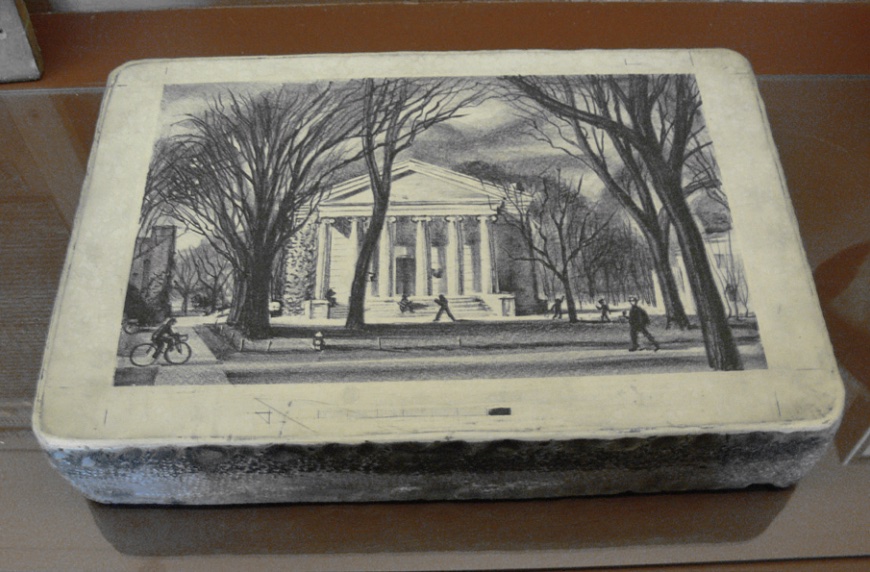
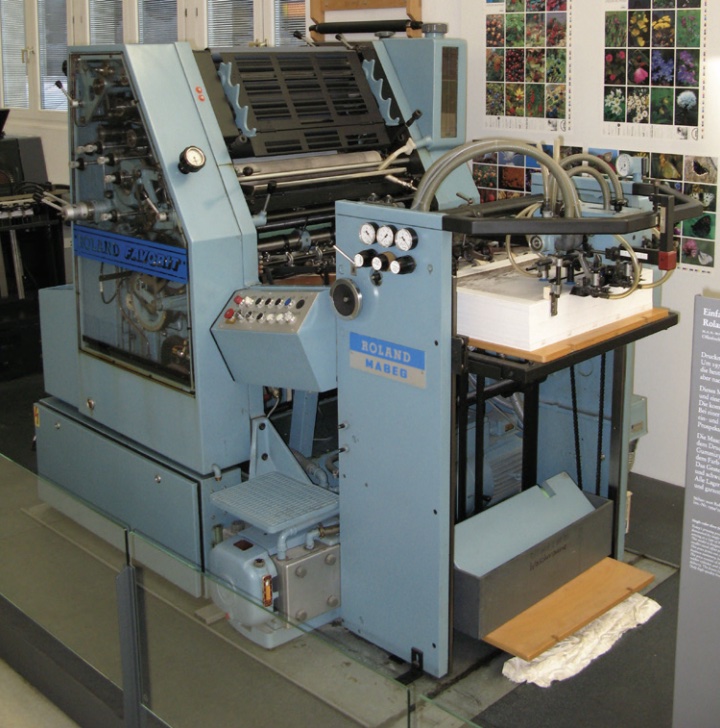
Stencil
Stencil prints are made by passing inks through a porous fine mesh matrix. In silkscreen printmaking, for example, silk fabric is mounted tightly on a rigid frame. Areas of the fabric are blocked off to form an image. The fabric-lined frame is placed on top of paper, canvas, or cloth. Ink is then pulled across the frame with a rubber blade. Where the fabric is blocked off, the ink does not transfer. Where the fabric is clear, ink is pushed through onto the receiving surface.
Video on Monotype
Monotype prints are a more modern process that is best described as a hybrid of both drawing and printmaking. The following MoMA video will demonstrate the process that was utilized by Edgar Degas in the mid 1870’s.
How to Make a Monotype (4:19)
Originals versus Reproductions
It is important to be able to distinguish between original prints and reproductions. Original prints are handmade prints. Since each print is subtly different due to its handmade character, each print is considered an original work of art (Figure 4). Editions of original prints can range from a few to dozens or hundreds of copies. Reproductions are mechanically produced. An original artwork is photographed; the photograph is then transferred to a printing plate on a mechanical press. Each print is nearly identical, and editions can run into the thousands or tens of thousands (Figure 5).
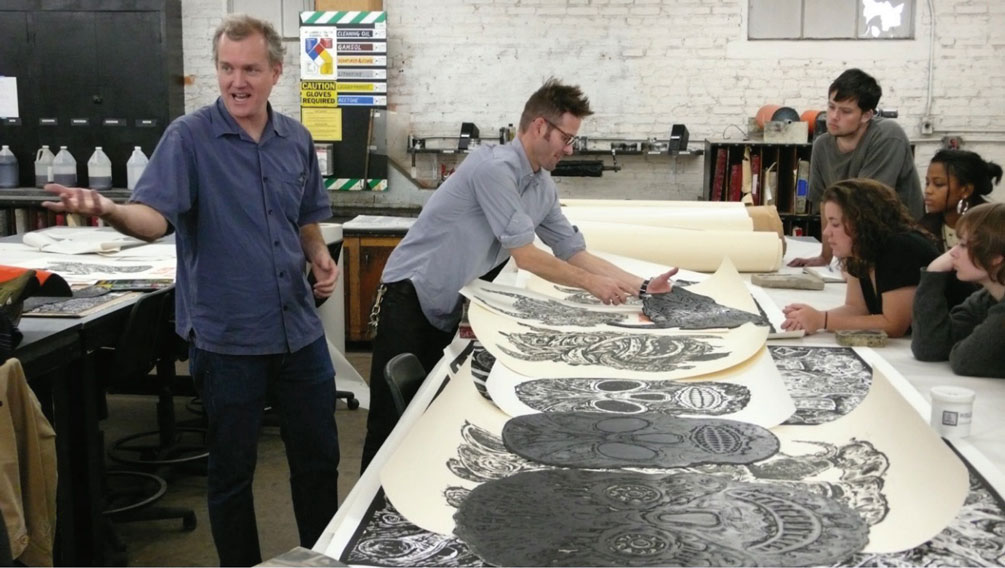
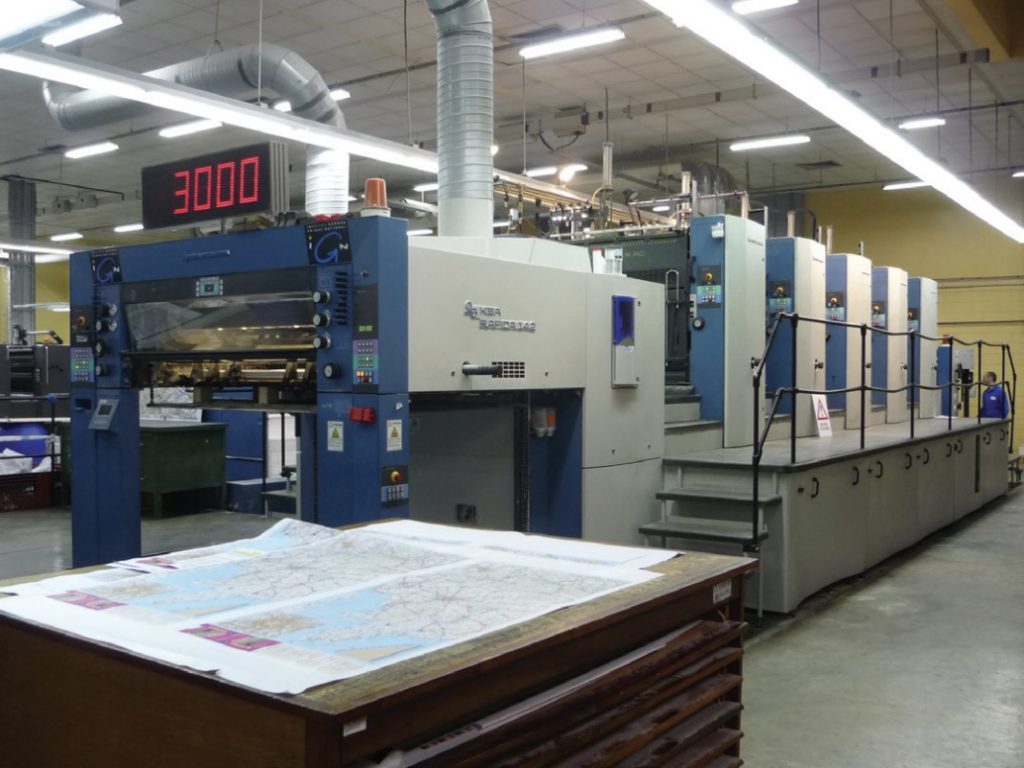
The value of an individual print depends on a number of factors, including whether it is an original print or a reproduction and the number of prints in an edition. Recently a new kind of print has become popular, the gicleé. This is essentially a digital inkjet print. Those who buy gicleé prints should be careful that only acid-free paper and archival inks are used in its production. The fibers that make paper can come from many different sources, some of which contain acid that will turn the paper yellow with age. Over time, ink pigments can be fugitive, lose color intensity or even shift in hue. These effects will lower the value of the print. Acid-free paper and archival inks resist these defects and preserve the original appearance of the art object, thus maintaining its value.
Media Attributions
- Figure 1. Relief Wood Carving (Author: User “Zephyris”; Source: Wikimedia Commons) is licensed under a CC BY-SA (Attribution ShareAlike) license
- Figure 2. Stone used for lithography print (Author: User “AndreasPraefcke”; Source: Wikimedia Commons) is licensed under a Public Domain license
- Figure 3. Lithographic Press (Photographer: Clemens Pfeiffer; Author: User “Panoramafotors”; Source: Wikimedia Commons; License: Copyright – Permissions Granted).
- Figure 4. Artist Preparing Linoleum Prints (Author: Kyle Van Horn; Source: Wikimedia Commons) is licensed under a CC BY (Attribution) license
- Figure 5. Offset Press (Author: User “Rémih”; Source: Wikimedia Commons) is licensed under a CC BY-SA (Attribution ShareAlike) license
Candela Citations
- The Language of Design (Art, Design, and Visual Thinking). Authored by: Charlotte Jirousek. Provided by: Cornell University. Retrieved from: http://char.txa.cornell.edu/language/introlan.htm. License: All Rights Reserved
- Some Ideas About Composition and Design, Elements, Principles, and Visual Elements. Authored by: Marvin Bartel. Provided by: Goshen College. Retrieved from: https://www.goshen.edu/art/ed/Compose.htm#principles. License: All Rights Reserved
- Elements of Art. Provided by: The J. Paul Getty Museum. Retrieved from: https://www.getty.edu/education/teachers/building_lessons/formal_analysis.html. License: All Rights Reserved
- Question: What is optical blending?. Provided by: The SVGA Blog. Retrieved from: https://sgvarts.blogspot.com/2012/09/question-what-is-optical-blending.html. License: All Rights Reserved

